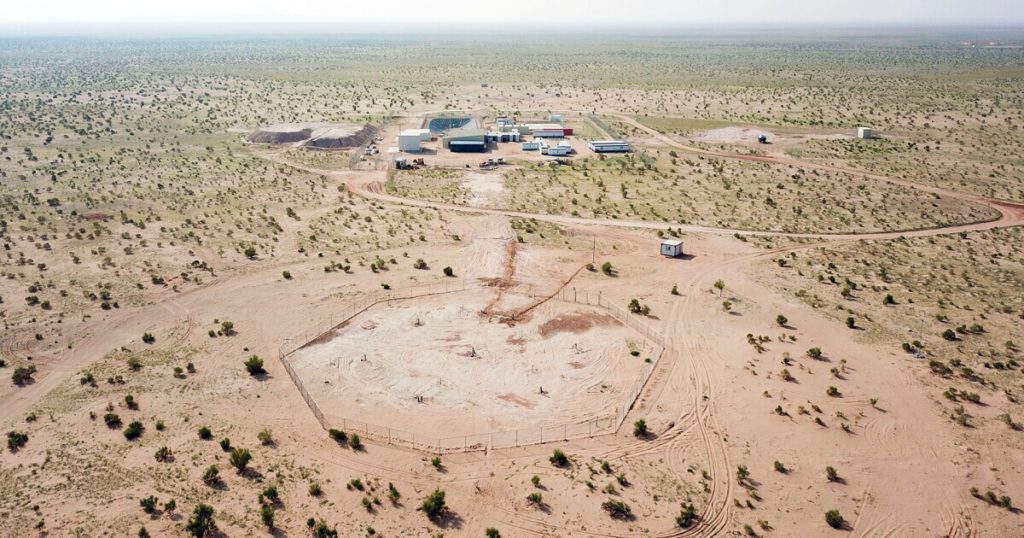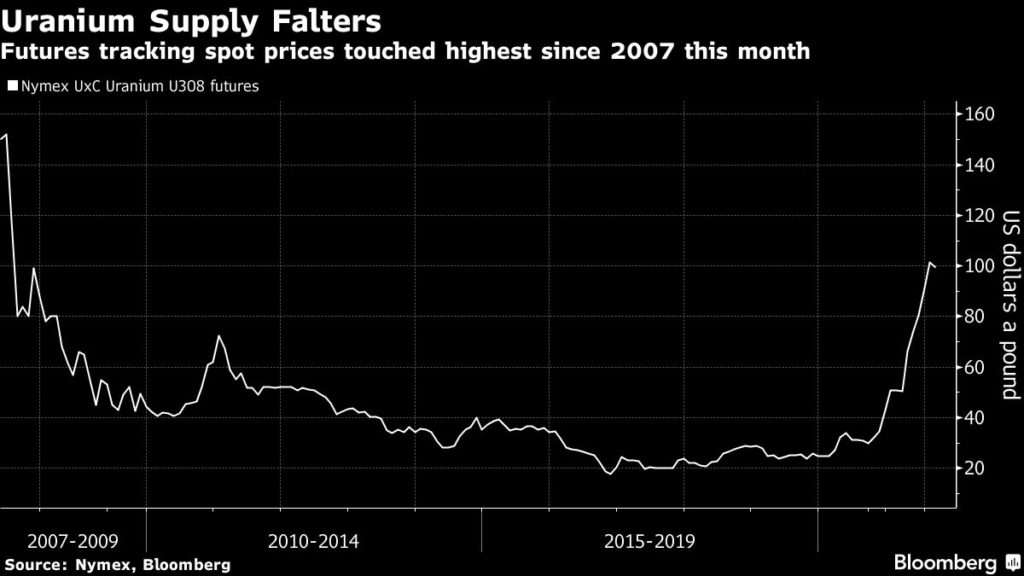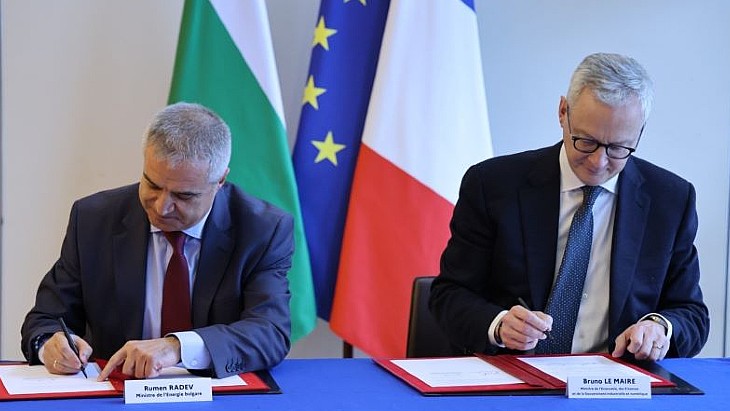India to seek nuclear investors as Kakrapar units inaugurated
23 February 2024
Prime Minister Narendra Modi's formal dedication to the nation of Kakrapar units 3 and 4 - the first Indian-designed 700 MWe pressurised heavy water reactors - took place days after reports that the Indian government is in talks with several private firms to invest in the country's nuclear sector.
.jpg?ext=.jpg) The Prime Minister addresses personnel at the Kakrapar plant during his 22 February visit (Image: Press Information Bureau)
The Prime Minister addresses personnel at the Kakrapar plant during his 22 February visit (Image: Press Information Bureau)Kakrapar 3 and 4 are the first of a fleet of planned 700 MWe pressurised heavy water reactors (PHWRs): unit 3 achieved first criticality in July 2020, and the unit was connected to the grid in January 2021 and was declared to be in commercial operation in July 2023. Unit 4 reached first criticality in December and is now undergoing power ascension testing.
According to the Prime Minister's Office, the two units were built at a cost of "more than INR22,500 crore" (about USD2.7 billion - 1 crore is 10 million). "They are first-of-its-kind reactors and with advanced safety features comparable with the best in the world. Together, these two reactors will produce about 10.4 billion units of clean electricity per year and benefit consumers of multiple states like Gujarat, Maharashtra, MP, Chhattisgarh, Goa and UT of Dadra and Nagar Haveli and Daman and Diu," the PMO said in a press release ahead of the ceremony.
According to the Times of India, Modi inaugurated the two new reactors and "interacted with senior officials" including Nuclear Power Corporation of India Ltd (NPCIL) Chairman Bhuwan Chandra Pathak, as well as visiting the visited the main control room of the plant.
"Went to the Kakrapar Atomic Power Station. Two new Pressurised Heavy Water Reactors were dedicated to the nation," Modi said on X.
The next two 700 MWe PHWRs are under construction at Rawatbhata in Rajasthan, and the Indian government has sanctioned the construction of further units at Kaiga in Karnataka; Gorakhpur in Haryana; Chutka in Madhya Pradesh; and Mahi Banswara in Rajasthan.
Seeking investors
According to Reuters, government sources said India was planning to invite private firms to invest some USD26 billion in its nuclear energy sector, and is in talks with "at least" five private firms including Reliance Industries, Tata Power, Adani Power and Vedanta Ltd to invest around INR440 billion (USD5.30 billion) each.
Plans are not yet finalised, but the government hopes to use the investments to build 11,000 MWe of new nuclear capacity by 2040, the sources said. The plants would be built and operated by NPCIL, with the investing companies earning revenue from electricity sales from the plants. This hybrid plan would not require any amendment to India's Atomic Energy Act of 1962 - which prohibits private control of nuclear power generation - but would need to be approved by the Department of Atomic Energy, they said.
Only two government-owned enterprises - NPCIL and Bharatiya Nabhikiya Vidyut Nigam Limited (BHAVINI, set up to build and operate fast reactors) - are legally allowed to own and operate nuclear power plants in India. But the possibility of involving other public sector and private corporations in the country's future expansion plans is something that has been under consideration for some time. In 2016, the government amended the Atomic Energy Act to allow NPCIL to form joint venture companies with other public sector undertakings India in a move intended to help the state-owned company to secure funding for new projects, although the legislative change did not extend to private sector companies or foreign investors.
As well as further 700 MWe PHWRs, Indian plans envisage the construction of large reactors from overseas vendors, including further Russian-designed VVER reactors in addition to those already in operation and under construction at Kudankulam in Tamil Nadu. In August 2023, Minister of State Jitendra Singh also told the country's parliament that the government was considering options for small modular reactors, and looking at ways to allow the participation of the private sector and start-ups in such projects.
Bloomberg News | February 22, 2024 |

A $1.6 billion uranium mining deal between France and Mongolia that is part of French efforts to diversify supplies to power its fleet of nuclear reactors is running into political hurdles.

A debate about protecting strategic resources in Mongolia risks delaying the finalization of the agreement until after elections in June, according to two people familiar with the matter who asked not to be identified. Progress has also been hampered after the Asian country’s chief negotiator stepped down, a third person said, meaning the deal had to be redrafted.
French uranium producer Orano SA reached an outline accord to develop and operate the Zuuvch-Ovoo mine in Mongolia in October during a trip by the nation’s president, Khurelsukh Ukhnaa, to Paris to meet with counterpart Emmanuel Macron.
A final investment agreement was expected to be signed by the end of last year, with production due to start in 2028.
A long delay or even cancellation of the project would be a blow to state-controlled nuclear group Orano, which has said the plan is a key step in widening supplies as global demand picks up. It has uranium mining operations in Canada and Kazakhstan, as well as in Niger, where its business has been put in jeopardy by last year’s military coup.
Mongolian government representatives were not immediately able to comment on the contract delays. Orano said in an emailed statement that talks are continuing and that authorities have expressed strong motivation to finalize the agreement as soon as possible.
A series of supply setbacks in the past year including the Niger coup, which disrupted shipments to Europe, has pushed spot uranium prices to 15-year highs. The world’s biggest producer of the metal, Kazakh state-owned miner Kazatomprom, cut its production forecast last month, citing a shortage of acid needed to process the ore. That’s happening amid a revival of interest in nuclear power as governments try to decarbonize their economies to meet emissions targets.

France said in October it wants to give landlocked Mongolia, which is situated between Russia and China, “the means to benefit from greater strategic sovereignty” in the face of “two extremely powerful neighbors.”
Russia supplies more than 80% of the petroleum products Mongolia needs, while China is the main buyer for Mongolian exports. Beijing is adding atomic plants at a rapid pace.
Tensions around access to critical raw materials and strategic equipment have flared up between the West and Russia after President Vladimir Putin sent troops to Ukraine two years ago. The US and Europe have imposed severe sanctions on the Russian economy, prompting the Kremlin to turn to China, Turkey and Arab countries to keep its industry afloat.
Uranium price jumps to 15-year high as top miner flags shortfall
Russia has also become much more hostile to any Western influence on its neighbors, including Central Asian nations and Mongolia. Meanwhile, Moscow has displaced Paris as a leading partner in several African capitals in the wake of military coups, including in Niger.
Soon after Mongolia’s president returned from Paris in October he was paid a visit by a Russian delegation led by Deputy Prime Minister Viktoria Abramchenko. In December, Russia also agreed with Mongolia on a plan to build a small modular reactor, according to state news agency TASS.
When Russia cut energy supplies to its neighbor in December, citing an incident at a hydro power plant, Mongolia had to limit daily power consumption, highlighting its dependence.
Mongolian Energy Minister Battogtokh Choijilsuren visited Moscow the same month to discuss the possibility of uninterrupted supply of petroleum products with Russian Deputy Prime Minister Alexander Novak. Earlier in February, Russia said it’s treating Mongolia in a preferential manner when it comes to oil-product prices.
(By Ilya Arkhipov, Samy Adghirni and Francois de Beaupuy)
France and Bulgaria to strengthen nuclear energy cooperation
22 February 2024
French Economy Minister Bruno Le Maire and Bulgaria's Energy Minister Rumen Radev have signed a declaration of intent to establish bilateral cooperation in the field of nuclear energy, including the areas of nuclear construction programmes, small modular reactors and development of a European supply chain.
 (Image: Bulgaria's Ministry of Energy)
(Image: Bulgaria's Ministry of Energy)The declaration, signed in Paris, will see the two members of the European Nuclear Alliance continuing to cooperate as part of the Alliance and its promotion of nuclear energy within the European Union, as well as committing to establish bilateral cooperation in the field of nuclear energy.
According to the French Economy Ministry: "This cooperation will concern, among other things, the nuclear construction programmes envisaged in the two countries, the analysis of new technologies such as small modular reactors or advanced technology reactors, the development of a European supply chain, the fuel cycle, nuclear power and the strengthening of nuclear training courses within the two countries."
The declaration recognises the "essential role" nuclear energy will play in both countries' "efforts to strengthen energy security and sovereignty, reducing carbon emissions to achieve carbon neutrality by 2050, provide affordable energy and support industrial and regional development".
It also "promotes the participation of companies from both countries in new projects, management of aging and long-term operation, dismantling and decommissioning of nuclear installations and in particular nuclear reactors" as well as analysing, with a "long-term vision, the possibilities of cooperation on new construction projects in Bulgaria based on European Gen III+ technologies including large reactors and small modular reactors".
The statement says it is not designed to be legally binding on either side but seeks to strengthen cooperation with regular exchanges, and leaves the door open for extending cooperation by mutual agreement.
Bulgaria's Radev said: "When we share know-how on technology, education and training programmes between Bulgaria and France in the nuclear field, this means that we also share an understanding of the future, and also of our security and competitiveness, a green future based on real baseload, on low carbon energy that is secure, reliable and gives us the chance to be sustainable, competitive and to develop our economies in the best possible way."
France's Le Maire said: "We want to extend our cooperation with Bulgaria to other areas with regard to nuclear energy. This includes cooperation in the supply chain, skills development. I set out the idea of a project of common interest in the nuclear field because you know that we have projects of common interest on many topics, including raw materials, hydrogen. It is worth having projects of common interest in the field of nuclear energy as well."
Bulgaria currently has two units operating. Kozloduy units 1-4 were VVER-440 models which the European Commission had classified as non-upgradeable and Bulgaria agreed to close them during negotiations to join the European Union in 2007. Units 5 and 6 feature VVER-1000 reactors that were connected to the grid in 1987 and 1991, respectively. Both units have been through refurbishment and life extension programmes to enable extension of operation from 30 to 60 years. The country is currently planning two new Westinghouse AP1000 units at Kozloduy, and has said further new units will be needed by 2050. There have also been discussions over the feasibility of small modular reactors as the country.
France derives about 70% of its electricity from nuclear energy and has been active in developing nuclear technology and advocating for it within the European Union and has an ambitious expansion programme for six EPR-2 PWRs at three sites in France over the coming years with the aim of a construction start before May 2027.
Construction starts on second phase of Zhangzhou plant
22 February 2024
The first safety-related concrete has been poured for the nuclear island of unit 3 at the Zhangzhou nuclear power plant in Fujian province, China National Nuclear Corporation (CNNC) announced. It is the first of two Hualong One units planned as the second phase of the plant, which will eventually house six such reactors.
.jpg?ext=.jpg) The first concrete is poured for the basemat of Zhangzhou unit 3 (Image: CNNC)
The first concrete is poured for the basemat of Zhangzhou unit 3 (Image: CNNC)
In May 2014, the local government gave approval for Phase I of the Zhangzhou plant, comprising two AP1000 units. The National Nuclear Safety Administration gave approval in December 2015 for the AP1000 units and confirmed site selection in October 2016. Construction of Phase I had originally been expected to start in May 2017. However, CNNC subsequently decided to use the HPR1000 (Hualong One) design instead. Two more Hualong One units are planned for Phase II of the plant and a further two proposed for Phase III.
Construction of Zhangzhou 1 began in October 2019, with that of unit 2 starting in September 2020. The units are scheduled to enter commercial operation in 2024 and 2025, respectively.
CNNC issued the environmental impact assessment for Zhangzhou units 3 and 4 in October 2020. In September 2022, China's State Council approved the construction of two Hualong One units as Phase II of the Zhangzhou plant.
CNNC has now announced that work on Phase II has commenced, with the pouring of first concrete for the nuclear island of unit 3 on 22 February.
The Zhangzhou project is owned by CNNC-Guodian Zhangzhou Energy Company, a joint venture between CNNC (51%) and China Guodian Corporation (49%).
The first two demonstration units of CNNC's version of the Hualong One design at the Fuqing plant in Fujian province have both already started up. Unit 5 entered commercial operation on 30 January 2021, with unit 6 following on 25 March 2022. Two Hualong One reactors have also been constructed as units 2 and 3 of the Karachi plant in Pakistan's Sindh province. These entered commercial operation in May 2021 and April 2022, respectively.
"At present, the first four units of Hualong One have been completed and put into operation, and the batch construction is progressing smoothly," CNNC said. "Among them, the Zhangzhou Nuclear Power Project is the starting point for the batch construction of Hualong One: unit 1 is expected to be put into operation in 2024; unit 2 is undergoing cold test-related preparations such as the installation of internal components of the reactor."
In addition to Zhangzhou units 1-3, CNNC is also building two Hualong One reactors as units 3 and 4 of the Changjiang plant, in Hainan province, construction of which began in March 2021 and December 2021, respectively.
Earlier this week, it also held a ground-breaking ceremony for Phase I of the Jinqimen plant in Zhejiang province, which will also feature two Hualong One reactors.
Investment contract supports US demonstration reactor project
22 February 2024
The US Department of Energy (DOE) and Kairos Energy have signed a technology investment agreement to implement an Advanced Reactor Demonstration Program (ARDP) risk reduction award to support the design, construction, and commissioning of the Hermes demonstration reactor.
.jpg?ext=.jpg) A rendering of the Hermes demonstration reactor plant (Image: Kairos Power)
A rendering of the Hermes demonstration reactor plant (Image: Kairos Power)
The agreement will see the DOE provide up to USD303 million using a performance-based, fixed-price milestone approach, with the company receiving fixed payments on demonstrating the achievement of significant project milestones.
Kairos Power co-founder and CEO Mike Laufer applauded the DOE for pursuing the use of this "novel" approach to public-private partnerships, which he said "allows us to remain focused on achieving the most important goals of the project while retaining agility and flexibility to move quickly as we learn key lessons through our iterative development approach", he said.
"This agreement incentivises efficiency, drives performance, and establishes credibility to deliver," Laufer added.
Hermes, a 35 MW (thermal) non-power version of the company's fluoride salt-cooled high temperature reactor, the KP-HFR, is to be built at Oak Ridge, Tennessee and is the first non-water cooled reactor to be approved for construction in the USA in more than 50 years. It is a critical step on Kairos' iterative pathway to commercialising its technology: the company has also submitted a construction permit application for Hermes 2, a proposed two-unit, electricity-producing demonstration plant that would build on the learnings from Hermes and would demonstrate the complete architecture of future commercial plants.
The KP-HFR is one of five teams selected in 2020 by the DOE to receive USD30 million in initial funding for risk reduction projects under the ARDP. Since then, Kairos said, it has made "steady progress" towards demonstration, establishing extensive testing and manufacturing infrastructure to deliver the Engineering Test Unit series and advancing its fuel and molten salt coolant workstreams.
US Assistant Secretary for Nuclear Energy Kathryn Huff said the Hermes reactor is an important step toward realising advanced nuclear energy's role in the nation's clean energy transition. "Partnerships like this one play a significant role in making advanced nuclear technology commercially competitive," she added.
Researched and written by World Nuclear News
No comments:
Post a Comment